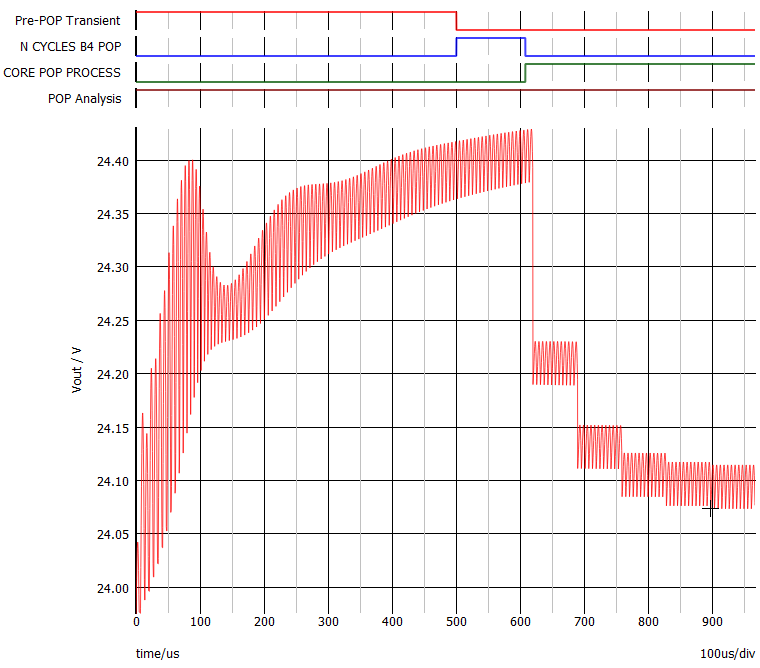Date
A number of SIMPLIS Simulation Analysis and Control Functions have been added in versions 9.2 and 9.3. This webinar discusses how these functions can be used to both configure SIMPLIS models based on the simulation analysis being run, but also how to modify the time duration of the analyses based on circuit operation. Particular focus will be on the Pre-POP Transient analysis that is newly added in version 9.3.
An Analysis Type Source was added in version 9.2 that can be configured to provide a logical one output when SIMPLIS is performing any of the following analyses:
- Periodic Operating Point (POP) analysis
- Pre-POP Transient
- N-Cycles Before POP
- Core POP Process
- AC Analysis
- Transient Analysis
As of version 9.3, the Pre-POP Transient analysis, if enabled, is the first subtask to be run in the POP analysis. After the Pre-POP Transient analysis is complete, the simulation of “N cycles before launching POP” is run next, followed by the core POP process. The Pre-POP Transient analysis is useful for complex systems with a large number of energy-storage elements and sequential logic circuits, allowing the core POP process to be launched only after the system has settled to a reasonable starting point.

These analysis sources can be used in various ways to configure a SIMPLIS model to have different behavior based on the type of SIMPLIS analysis being performed. One example that is worked out in some detail is how to configure a control circuit to either enable or disable a dithering feature based on whether a POP analysis is being performed.
Three Early Start / Early Stop functions are also discussed. These Early Stop /Early Start functions can be engaged when circuit operation conditions cause the output of a specialized schematic device to trigger from a logical zero to a logical one. These specialized schematic devices listed here perform in a very similar manner as the POP Triger device.
- Early Start of Saving Data
- Early Stop of Transient
- Early Stop of Pre-POP Transient
The Pre-POP Transient analysis stops when either it has reached the specified stop time or when the logic output of the Early Stop of Pre-POP Transient gate has registered a 0-to-1 transition.
In addition, if the Pre-POP Transient analysis is enabled, the POP analysis now supports automatic resetting of the “Maximum period” parameter according to the switching periods observed by the POP trigger during the Pre-POP Transient analysis.
Link to Webinar Recording
The webinar recording can be viewed via GoTo Webinar at this link: Using the SIMPLIS Pre-POP Transient Analysis (1:00:29)
The recording can also be viewed via Amazon CloudFront at this link: Using the SIMPLIS Pre-POP Transient Analysis (1:00:29)
Reference Materials
Schematics and presentation slides for the webinar can be downloaded here: Webinar_AnalysisControlFunctions.Sept2025.zip